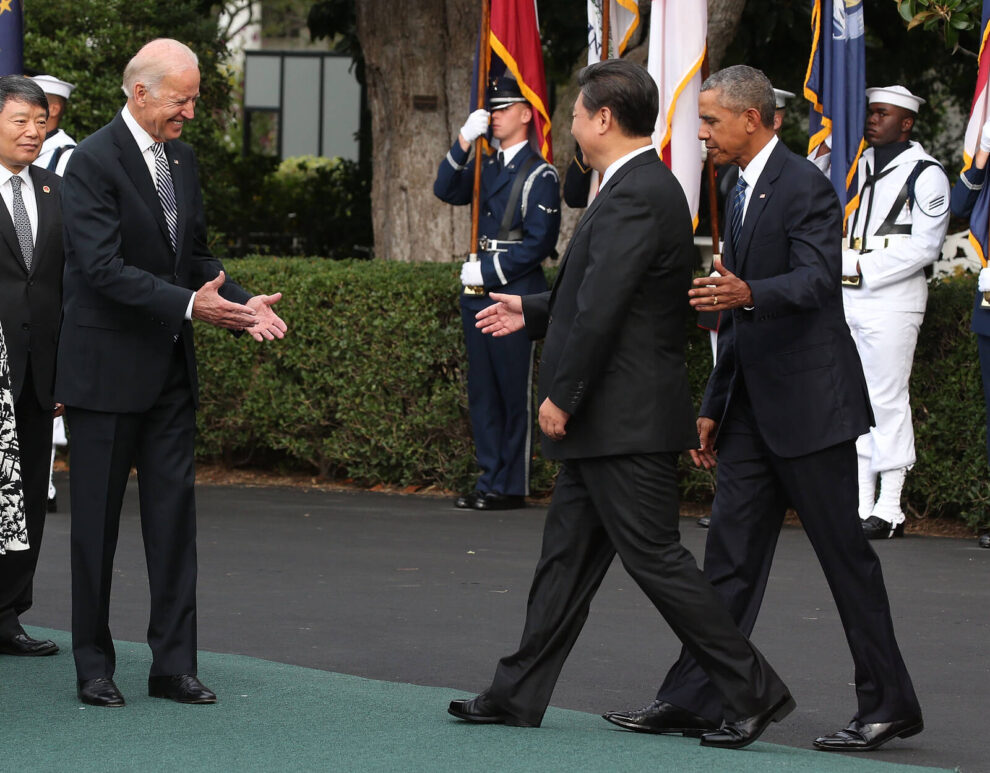In the midst of the increasingly alarming threat of climate change, international cooperation is certainly the key to saving our planet. As the two largest economic and political powers in the world, China and the United States have a crucial role in addressing environmental issues, especially related to climate problems that must be fixed immediately before it gets worse. Moreover, the United States and China are the two largest carbon emitters in the world, so they are indirectly responsible for the issue. Collaboration between the two is crucial as their greenhouse gas emission contributions significantly affect the global climate balance.
As the world’s largest carbon emitter, China dominates in carbon emissions from its fast-growing industrial sector, particularly from coal-fired power plants. China’s rapid economic development has led to a significant increase in energy consumption, much of which still comes from fossil fuels.
Although the United States has a smaller population than China, it is still one of the largest carbon emitters in the world. The country has a long history of using fossil fuels to meet its energy needs, especially in the industrial and transportation sectors. Therefore, the United States and China share a global responsibility to reduce greenhouse gas emissions and also to slow down the rate of global warming.
The cooperative relationship between the United States and China in the environmental field is not a new thing, but the two countries have long been involved in cooperative relations in the environmental field and are quite concerned about the issue.
In the early 1990s, the U.S. and China began to cooperate on the environment, focusing on exchanging information and technology on environmental issues such as water management, air pollution control, and natural resource conservation. This period marked the beginning of formal cooperation between the two countries in discussing and exchanging experiences on fundamental environmental issues.
The US and China also both signed or ratified environmental protocols and agreements, such as the Montreal Protocol in 2007 and the Paris Agreement in 2015, which aim to reduce greenhouse gas emissions to limit global temperature rise to below 2 degrees Celsius above pre-industrial levels.
Before ratifying the Paris Agreement in 2014, the US and China made a joint statement emphasizing their commitment to reducing emissions. The statement was called the Joint Announcement on Climate Change. China pledged to peak carbon emissions before 2030, while the US set a target to reduce emissions by 28% by 2025. The impact of the joint announcement was to press for greater global contributions to tackling climate change and provide momentum for other countries to follow this example.
As we know that there has always been competition for hegemony and tension between America and China, even in recent years, relations between the two countries have deteriorated due to human rights issues, such as the issue of reeducation camps in Xinjiang, tariff barriers, the fate of Taiwan, and South China Sea claims, climate change is one of the few issues that make America and China agree to cooperate.
On October 26, 2023, the Great Wall Climate Dialogue was held in Beijing, where the conference was attended by California Governor Gavin Newsom and Chinese Environment Minister Huang Runqiu. On that occasion, Huang said that there is a desire for China to strengthen cooperation with the US in combating drastic climate change. One of the reasons is because in China, he has witnessed record high temperatures in many regions. Huang also saw other climate change impacts such as flooding and the melting of the cryosphere, so he thinks it is necessary to make a systematic plan. China’s environment ministry is committed to continuing to implement agreements based on the memorandum of understanding signed last year between China and California on climate adaptation, carbon market investment, environmental law implementation and human resource exchange to strengthen cooperation and play a positive role in China-US environmental and climate cooperation.
From the track record of the United States and China’s cooperation commitments in the environmental field, it can be seen that the two countries really pay serious attention and have a strong commitment in dealing with this climate issue. But often obstacles continue to be found in the midst of the two countries’ efforts to tackle global climate problems.
One of the biggest obstacles is the difference in approach and priorities between the US and China in terms of the environment and foreign policy. Often, political disputes in other areas can affect environmental collaboration.
The US has focused on reducing carbon emissions and promoting the use of renewable energy. Their top priority is to reduce dependence on fossil fuels and introduce policies that support the transition to clean energy. On the other hand, while China is committed to emissions reduction, its top priority is sustainable economic development. They continue to seek to expand infrastructure and economic growth, which still relies on the use of fossil fuels, especially coal.
Besides, despite agreements and joint initiatives, transparency in implementation, monitoring and reporting on progress is likely to remain a challenge. Uncertainty in data and reporting may hinder evaluation of the effectiveness of cooperation.
It would be unfortunate if the cooperation between the United States and China in the environmental field is hampered because of problems that can actually be fixed. For this reason, steps need to be taken to be a solution to this challenge.
Some solutions that are realistic enough to be applied in overcoming the problem of differences in focus and priorities in the cooperative relationship between the United States and China are to conduct dialogue and environmental diplomacy to understand and respect the different priorities and goals of the two countries continuously. This open dialogue will help find a middle ground that is acceptable to both sides. It is also necessary to establish a clearer and more structured joint framework that takes into account and respects the different priorities, which will help find ways in which both can contribute according to their respective strengths and needs.
Furthermore, to ensure greater success in environmental cooperation, it is important for the U.S. and China to improve transparency and accessibility to data and information. Better cooperation in terms of consistent reporting and effective monitoring will support more accurate evaluations and strengthen agreements and sustainable measures in addressing environmental issues.





































